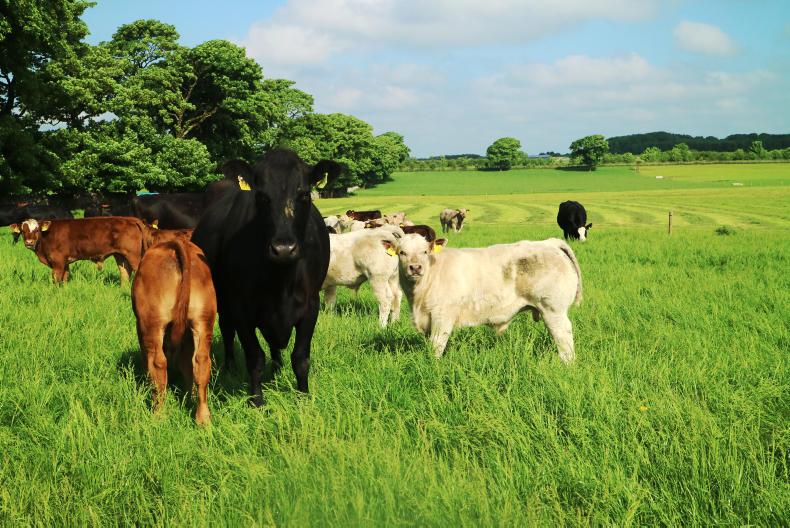Weather-wise, 2018 has really been a case of one extreme to another. Inclement weather conditions in the spring prevented early turnout of cattle and now in June a prolonged dry period has nearly stalled grass growth. The following tips could be beneficial on beef farms this week.
1 Use paddocks that have been left for surplus bales as grazing pasture. Use a strip-grazing system to best utilise grass and to achieve greater clean-outs.2 Be wary of sunstroke in animals. Some early symptoms include animals that have their mouths open and are breathing hard, show signs of lethargy with their heads low as well increased salivation. Affected animals then become too weak with flaccid muscles and eventually are unable to rise. Consult your vet if you think that your animals are suffering from heat stroke. Keep cattle in sheltered paddocks with adequate water access on warm days.3 Introduce a creep feeder or creep system to feed meal to calves. Suckler calves will have performed well on the most farms, with the good grazing year up until now, and keeping up their performance over this slow growing period should now be the priority.4 Feed surplus bales in paddocks – bales that would have been cut early in the summer. This will help to maintain the grazing rotation. It would not be recommended to use bales that have been cut in the last few days as these bales will heat in paddocks and cattle will not eat them.
Suckler calves will have performed well on the most farms and keeping up their performance over this slow growing period should now be the priority.
Suckler calves will have performed well on the most farms and keeping up their performance over this slow growing period should now be the priority.
5 Compound fertiliser should not be forgotten. The previous good growing period will have greatly diminished nutrients in the soil, with most of it been used to grow grass plants over a short period and in a lot of cases this would have been taken out as surplus bales. One and half bags of 18-6-12 per acre would be recommended for these paddocks. Read more
Heatwave advice: second-cut silage and topping dilemmas
Irish beef in the global marketplace
Beef management: bloat, grazing in dry conditions and wormer resistance

